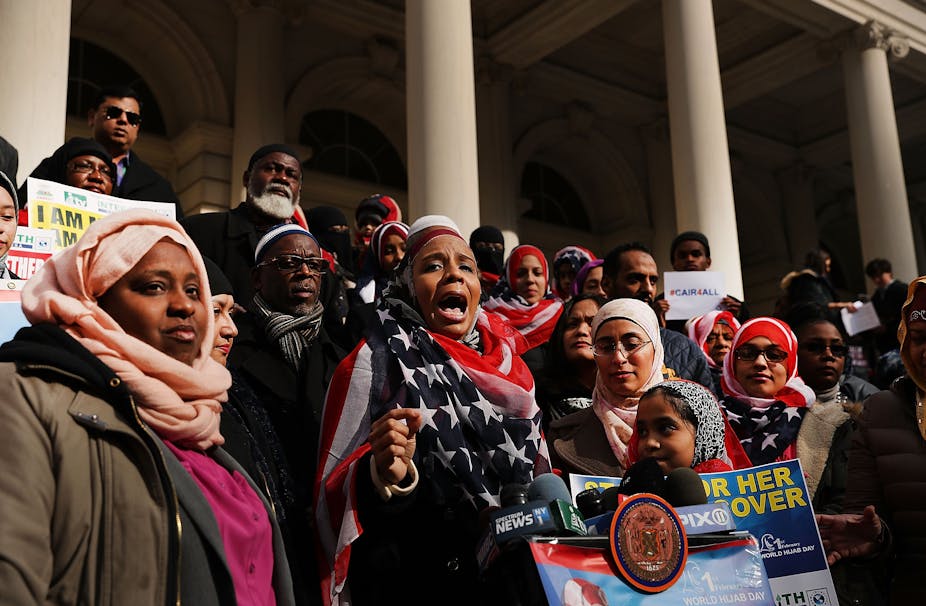By Molly Flanagan
First and foremost, a hijab is commonly known as a covering that Muslim women wear that covers their hair, face, neck, and/or body, depending on the style. But with the growing rise of Islamophobia, Muslim women, and their clothing choices, have faced tremendous scrutiny. In April of 2021, a conservative-backed movement to ban minors from wearing hijabs was pushed into the French Senate. The amendment was later passed as a heroic act of preventing “religious extremism” but in reality, it’s a simple xenophobic policy that would attract conservative French voters. Similar issues arose in Switzerland, where burqas (a full body and face covering) were completely banned by Swiss voters after a right-wing group formed a petition with one-hundred thousand signatures in support of the policy. The victory was viewed as “a strong symbol to fight against radical Islam.” And even here in the United States, hats and head covering are still banned in the House and the Senate. But Ilhan Omar has taken her own initiative on fighting this law by becoming the first woman in Congress to wear a hijab - and she continues to wear it proudly despite the rule.
But the question remains: why do women choose to wear hijabs? Is it a religious obligation? Is it a choice of their own free will? Or is it for a different reason entirely? I have read dozens of articles regarding this topic and the only conclusion I have come to is that every woman wears it for their reasons. And no one has any control over that other than themselves. If these far-right hate groups took the time to understand why these women choose to continually wear a hijab, perhaps their opinion on their culture and heritage would shift, even if it’s just slightly.
The common assumption is that Muslim women wear headscarves and coverings as a religious devotion. This is true, it is understood to be an act of devotion to God by preserving their modesty in dress and behavior. It also maintains privacy from the attention of unrelated males. Even though this manner is perceived as oppression, it’s never actually stated in the Quran (the central Islam religious text) that women don’t have to wear hijabs or other forms of coverings. But the choice to wear a covering does the exact opposite. It’s empowering to these women because it’s asserting their pride in their culture, religion, and identity. It gives them a pathway to truly devote themselves to their faith, which is challenging in a time period that’s ravaged by Islamophobia. For these women, hijabs aren’t just a part of who they are, it’s a way of being.
The modern-day choice to wear a hijab is so much more empowering than perceived. And even though hijabs are expected to be forms of modesty, it doesn’t mean that women can’t be fashionable. Nordstrom recently patterned with a Muslim-led company called “Henna and Hijabs” to start selling hijabs and supporting Muslim-backed businesses. The colors and patterns are meant to be beautiful and inspiring to women who may feel hesitant about wearing them. But there are still many women who wear their hijabs with pride. Olympic fencer and bronze medalist, Ibtihaj Muhammad, was the first American Olympian to compete while wearing a hijab. Her family was very supportive of her fencing career because it preserves her modesty and inspires other Muslim athletes to compete despite adversities. Another feminist hijab-wearing icon is Tahereh Mafi. She is a greatly accomplished young adult and fantasy author with a side talent for fashion and brick dancing. Her novel, A Very Large Expanse of Sea, revolves around a young girl who faces discrimination for wearing a hijab months after 9/11 (it’s a great book, I highly recommend it).
| Tahereh Mafi, posing for a fashion blog with her hijab |
Instead of banning and suppressing Muslim women and their right to express themselves, our world should take measures to educate themselves on their culture and religion beforehand. Because believe it or not, there are a lot more similarities between us than what meets the eye.

No comments:
Post a Comment